Frost Protection - UTL Repository
Frost Protection - UTL Repository
Frost Protection - UTL Repository
Create successful ePaper yourself
Turn your PDF publications into a flip-book with our unique Google optimized e-Paper software.
]<br />
F R O S T P R O T E C T I O N : F U N D A M E N T A L S , P R A C T I C E A N D E C O N O M I C S<br />
[<br />
passed by a point within the crop, there was a short-lived increase in the<br />
temperature recorded with exposed thermocouples. It is possible that these<br />
short-lived temperature increases have a positive effect and prevent freezing of<br />
the plant tissue; however, more research is needed to verify if this is true.<br />
Recently, some researchers have suggested that the mobile heater might be<br />
beneficial because it dries the plant surfaces. Since water typically freezes on the<br />
outside of plant tissue and then propagates inside the tissue to cause freezing in<br />
intercellular spaces, there may be some validity to this theory. However, more<br />
research is clearly needed to validate effectiveness of the machine.<br />
WIND MACHINES<br />
Conventional wind machines<br />
Wind machines (or fans) that blow air almost horizontally were introduced as a<br />
method for frost protection in California during the 1920s. However, they were<br />
not widely accepted until the 1940s and 1950s. Now they are commonly used in<br />
many parts of the world. Wind machines are used on a wide variety of crops<br />
including grapevines, deciduous trees and citrus. California citrus orchards are<br />
nearly all protected by wind machines.<br />
Wind machines generally consist of a steel tower with a large rotating fan near<br />
the top. There is usually a two- or four-blade fan with a diameter typically<br />
varying from 3 to 6 m. The typical height for fans is about 10–11 m above<br />
ground level. However, lower heights are used for lower canopies. To our<br />
knowledge, the fan height is set to avoid hitting the trees and there is no<br />
aerodynamic reason for the height selection. The most effective wind machines<br />
have propeller speeds of about 590 to 600 rpm. Fans rotate around the tower<br />
with one revolution every four to five minutes. Most wind machine fans blow at<br />
a slight downward angle (e.g. about 7 °) in the tower direction, which improves<br />
their effectiveness. When the fan operates, it draws air from aloft and blows at a<br />
slightly downward angle towards the tower and the ground. Power to operate<br />
the fan usually comes from an engine mounted at the base of the tower; however,<br />
some of the older machines have engines that rotate with the fan at the top of the<br />
tower. Matching the rotation of fans around their towers so that all fans are<br />
blowing in the same direction is believed to improve mixing effectiveness.<br />
Before investing in wind machines, be sure to investigate the local climate and<br />
local expenses. For example, if there is little or no inversion, then wind machines<br />
are not recommended. In California, wind machines are widely used in citrus<br />
orchards, which are mainly protected during December through January, but not<br />
in deciduous orchards, because inversions tend to be strong during winter months<br />
156


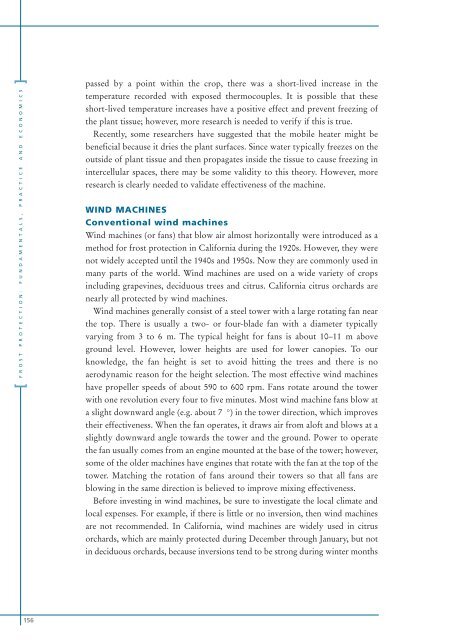
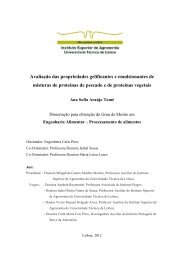
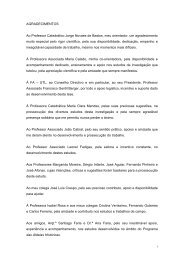

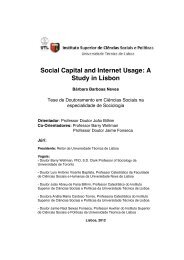
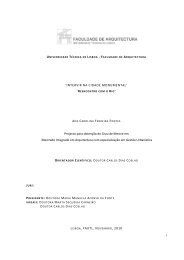
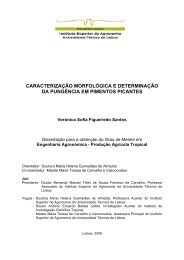

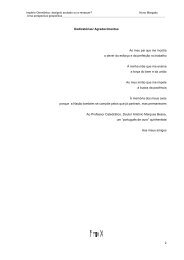

![Tese - Es..[1].pdf - UTL Repository - Universidade Técnica de Lisboa](https://img.yumpu.com/25707135/1/184x260/tese-es1pdf-utl-repository-universidade-taccnica-de-lisboa.jpg?quality=85)


